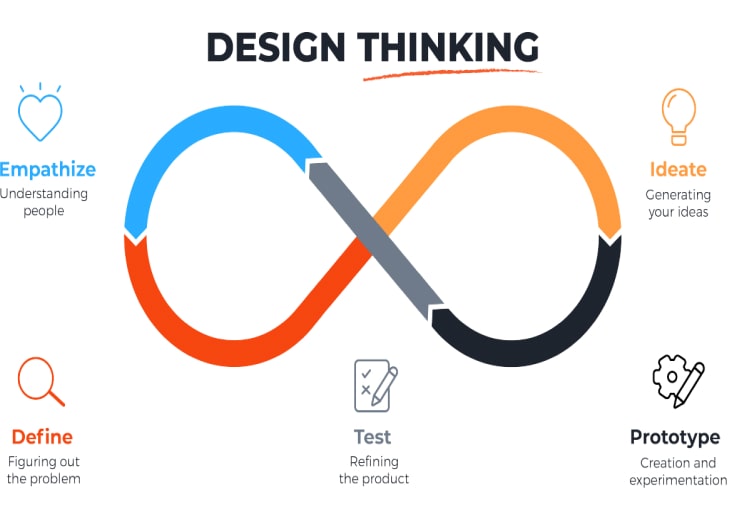Contact Info

Design thinking is a creative problem-solving approach that focuses on empathy, ideation, and prototyping to create innovative solutions. It has gained significant traction in various fields, including software development, for its ability to foster innovation and enhance user-centric design. This article explores the application of design thinking in software development and how it contributes to fostering innovation.
1. Understanding Design Thinking
Design thinking is a human-centric and iterative approach to problem-solving. It involves understanding and empathizing with users, defining problems, ideating potential solutions, prototyping, and testing these solutions. The process encourages collaboration, experimentation, and a willingness to iterate based on feedback.
2. Empathy and User-Centric Solutions
The first stage of design thinking is empathy, where developers immerse themselves in the users' experiences to understand their needs, challenges, and motivations. By empathizing with users, developers gain valuable insights that inform the design and development process, resulting in solutions that address real user needs.
3. Ideation and Creativity
Ideation is the stage where developers brainstorm and generate a multitude of ideas without judgment. This creative process encourages thinking outside the box and exploring innovative solutions to the identified problems. It often involves workshops, brainstorming sessions, and mind mapping to stimulate creativity.
4. Prototyping and Testing
Prototyping is a crucial step in design thinking. Developers create low-fidelity and high-fidelity prototypes to visualize and test their ideas. Rapid prototyping allows for quick iterations and refinement based on user feedback, ensuring that the final product meets the users' expectations and needs.
5. Iterative Process and Flexibility
Design thinking emphasizes an iterative approach, where developers continuously refine and improve their solutions based on feedback and testing. This iterative nature promotes adaptability and flexibility, allowing for adjustments at any stage of the development process to enhance the final product.
6. Cross-Disciplinary Collaboration
Design thinking encourages collaboration among multidisciplinary teams, including designers, developers, marketers, and product managers. Each team member brings a unique perspective and expertise, contributing to a comprehensive and innovative solution that considers various aspects of the product.
7. Impact on Innovation in Software Development
By incorporating design thinking into the software development process, teams can create innovative, user-centered solutions that stand out in a competitive market. It helps in identifying unmet user needs and solving complex problems effectively, ultimately fostering innovation and enhancing the user experience.
In conclusion, design thinking is a powerful approach in software development that promotes creativity, user-centricity, and innovation. By empathizing with users, generating creative ideas, and iterating based on feedback, software development teams can deliver solutions that truly address user needs and preferences, leading to successful and impactful software products.